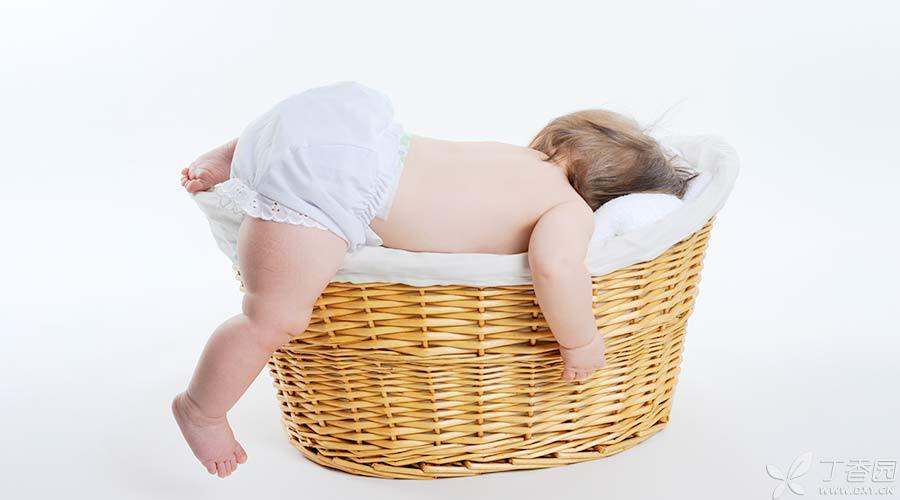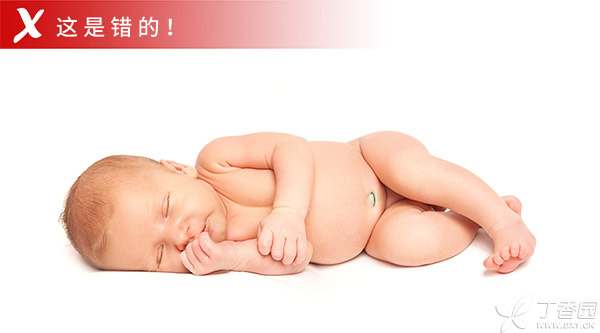
Before one year old, it is an important period to lay the foundation for the long-term healthy development of the baby, and it is also the period in life that is most prone to accidental death.
Wrong sleeping posture will increase the risk of sudden neonatal death, while correct sleeping posture can better protect the safety of the baby, and the safety issue cannot be overemphasized. How can we ensure the safe sleep of the baby and let the baby sleep better?
It’s not safe to sleep on your stomach.
Epidemiological investigation, which began in the 1980s, found that sleeping on one’s stomach is the most important risk factor for sudden neonatal death syndrome. The risk of sudden death of newborns sleeping on one’s stomach is 2.3 ~ 13.1 times that of lying on one’s back.
Sleeping on your stomach will make it easier for your baby to breathe the exhaled exhaust gas again, which may lead to hypercapnia and hypoxia. Lie prone will also affect the baby’s heat dissipation and increase the risk of overheating. Some latest studies have also found that sleeping on your stomach will change the self-regulation of the infant’s cardiovascular system during sleep, especially when the baby is 2 ~ 3 months old. Lie prone may also reduce the oxygen supply to the baby’s brain.
Sleeping sideways may be safer than sleeping on your stomach.

Some recent studies suggest that the risk of sudden neonatal death is similar to that of sleeping on one’s side and lying on one’s stomach. Some studies have also reported that lying on one’s side is more dangerous. Further, especially for babies who sleep on their sides and still press their stomachs, the risk of sudden death is 8.7 times that of lying on their backs.
The posture of sleeping on the side is extremely unstable, and the possibility of changing from sleeping on the side to sleeping on the stomach is significantly higher than that of sleeping on the back when the baby rolls.
It is safest to sleep on your back.
In 1987, the Netherlands launched the Neonatal Sleep Campaign, advising parents to let their newborn babies sleep on their backs. Subsequently, Britain, New Zealand, Australia, the United States and other countries also began to suggest that babies sleep on their backs. In 1992, the American Academy of Pediatrics gave advice to lie on their backs or on their sides, but revised this advice in 1996, believing that lying on their backs is the safest.
It is very important for adults who take care of the baby to make sure that the baby sleeps on his back every time.
Is it not good to sleep on your back?
Some parents think that lying on your stomach or sideways will make your baby sleep more comfortably, while lying on your back will make your baby sleep poorly. In fact, it is normal for your baby to wake up frequently at night and should not be regarded as not sleeping well.
Too much sleep and too long sleep may not be physiological advantages. When babies have nightmares and other discomfort during sleep, waking up from sleep is a very important physiological protective response.
Some parents also worry that lying on your back will cause your baby to choke or food to flow back into the airway. In fact, coughing or vomiting is physically normal to deal with the reflex of choking or inhaling into the airway. A large number of special studies conducted in various countries have found that lying on your back does not increase the risk of choking or inhaling food into the airway.
There are some exceptions, such as infants diagnosed with gastroesophageal reflux disease, and the American Academy of Pediatrics still recommends infants to lie on their backs. Other special cases should consult a doctor.
After the baby is born, lie on your back as soon as possible.
Newborns should be placed on their backs for the first few hours of life.
Many medical staff will let the baby lie on his side after birth, This has always been a headache. They believe that newborns need to clean up the amniotic fluid in the airway, but there is no evidence that lying on their sides may be easier to clean up the amniotic fluid. Worse still, some parents may let their babies sleep sideways or on their stomach at home when they see the medical staff doing this.
The American Academy of Pediatrics recommends that babies should immediately lie down on their backs as long as they do not hold them in their hands.

Premature infants are at greater risk of sudden neonatal death, Therefore, when their medical condition is stable, they should lie on their backs as soon as possible. The American Academy of Pediatrics recommends that medical staff should let premature infants sleep on their backs during hospitalization so as to form the habit of sleeping on their backs before they leave hospital, and set a good example for parents to perform supine sleeping before premature infants leave hospital.
But even in the United States, after many years of such advice, only about 50% of medical staff will place premature infants on their backs.
Studies on the sleep of premature infants before discharge found that premature infants who sleep on their stomach will have longer sleep cycles (too long sleep cycles are not good for newborns), less waking up and more central apnea.
There is not enough data to suggest when babies can be prevented from sleeping on their backs. However, many authorities recommend that children sleep on their backs before the age of 1. However, some parents may find that after 4 or 6 months, the baby will turn over on his side or prone during sleep. If they turn over on their own during sleep, they don’t have to turn them over deliberately.
When awake, it is better to lie prone.
Babies should lie on their back when sleeping, but when awake, under the condition of adult care, letting them lie prone can promote the development of athletic ability and greatly reduce the occurrence of postural oblique head deformity.
Postural oblique head deformity is also called [flat head syndrome], which refers to the fact that some of the baby’s skull may flatten due to its soft skull, which always lies on its back or likes to look in one direction. Although this does not affect the baby’s brain development, it may affect the appearance of the baby’s head and face.

From the first day of birth, you can start to let the baby play on his stomach several times a day. This can reduce postural oblique head deformity, also can promote the development of exercise ability, help the development of upper body muscles, and may also help relieve the baby’s colic.
Although there is no specific data to suggest how long to lie prone, it is best to give the baby time to lie prone under the care of adults every day.
Other killers of baby sleep
STEP 1 Smoking
Exposure to smoking environment will increase the probability of accidental death of newborns during sleep, especially when sleeping with smokers.
Step 2 Sleep with adults
Many mothers think that sleeping in the same bed is convenient for nursing and caring for their babies, but many tragedies happen every year. It may happen in just a few seconds when the mother is extremely tired and falls asleep, including when the mother falls asleep while nursing on the sofa or elsewhere.
For safety, please place your child on a crib or cradle within your reach where you can see and hear each other.
Step 3 Overheating
Too tight a package or too many covers also increase the risk of sleep.
The number of layers of baby’s clothes should not exceed the one covered by adults’ comfortable body temperature. If the baby perspires at night or the temperature of chest and hands is very high, it is not what kidney deficiency night sweat, but too much cover! In particular, care should be taken not to cover the baby’s face or head.
Responsible Editor: Yidan
The article was reprinted by Clove Garden authorized by the author.
Source: shutterstock.com
